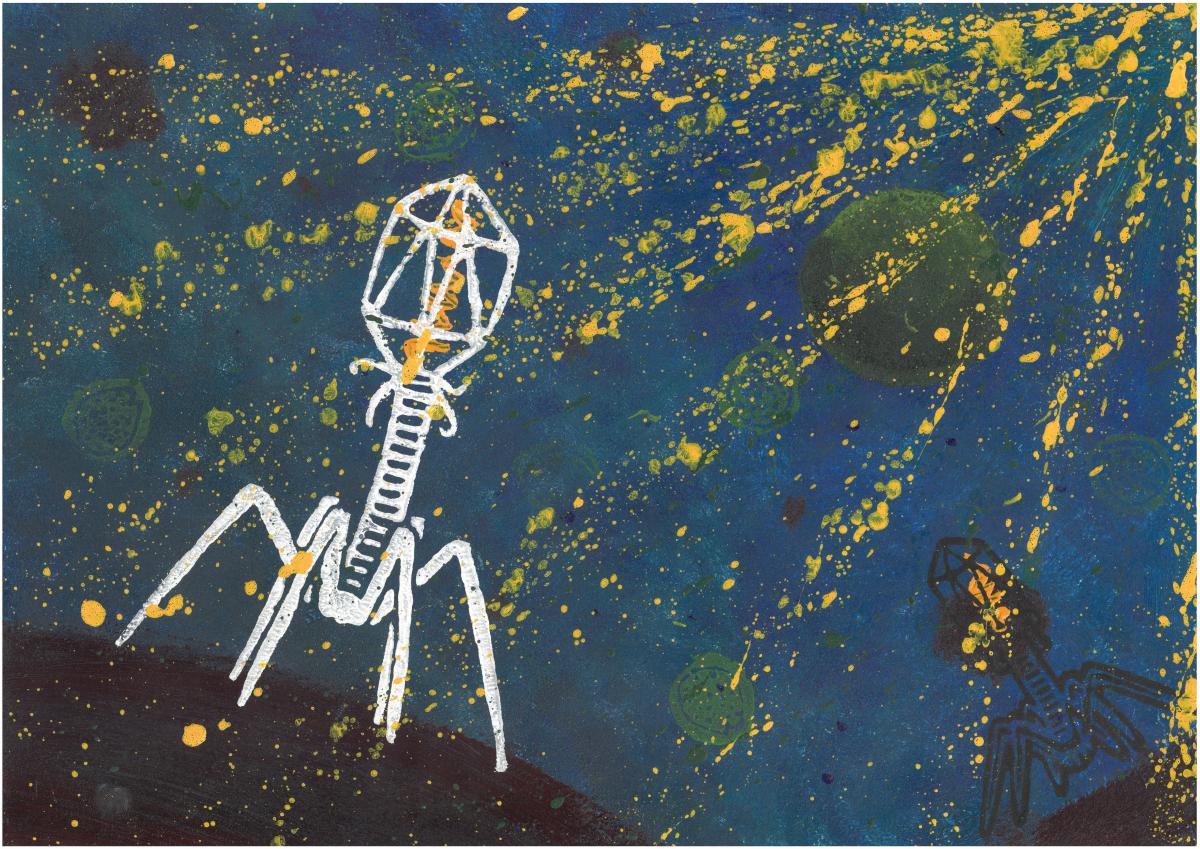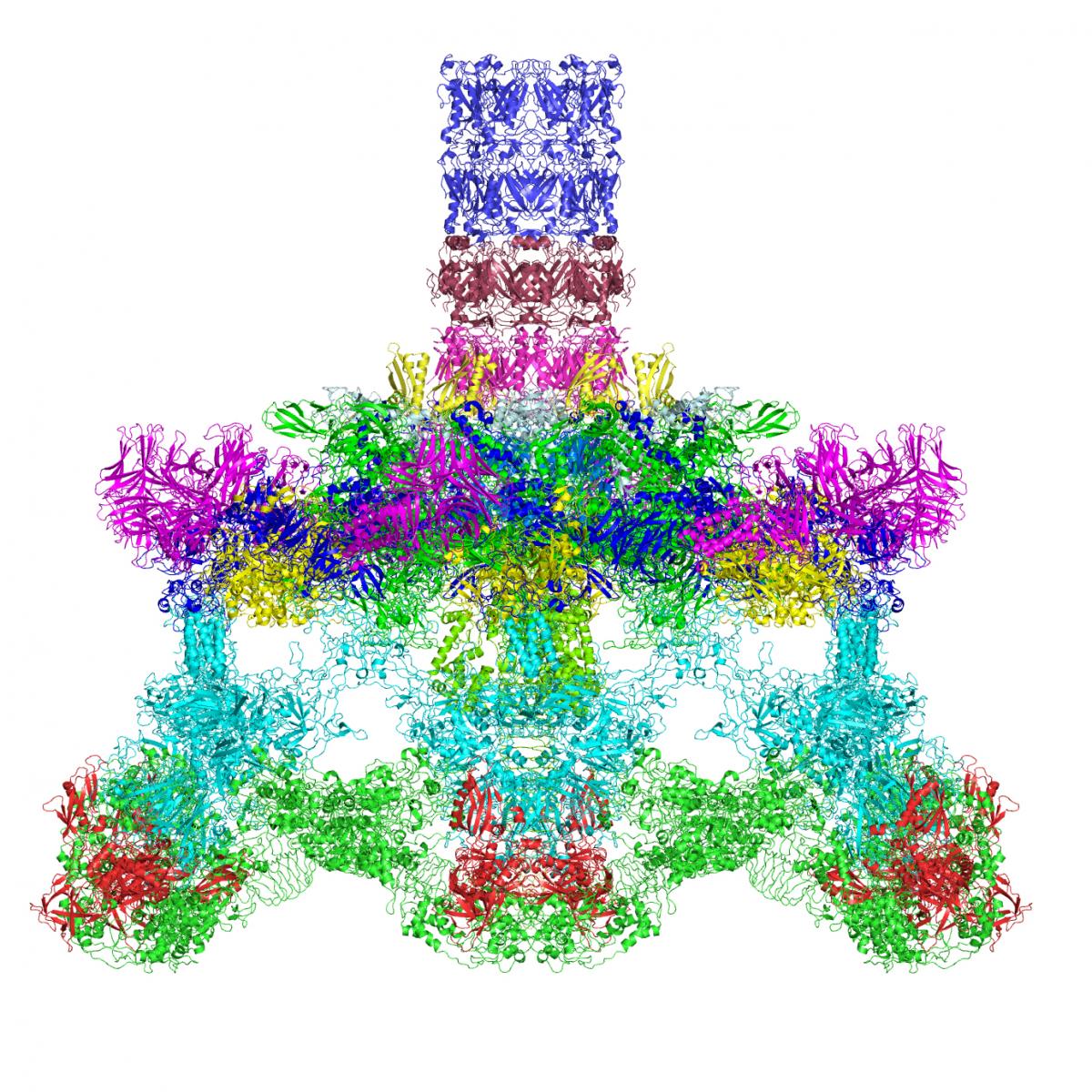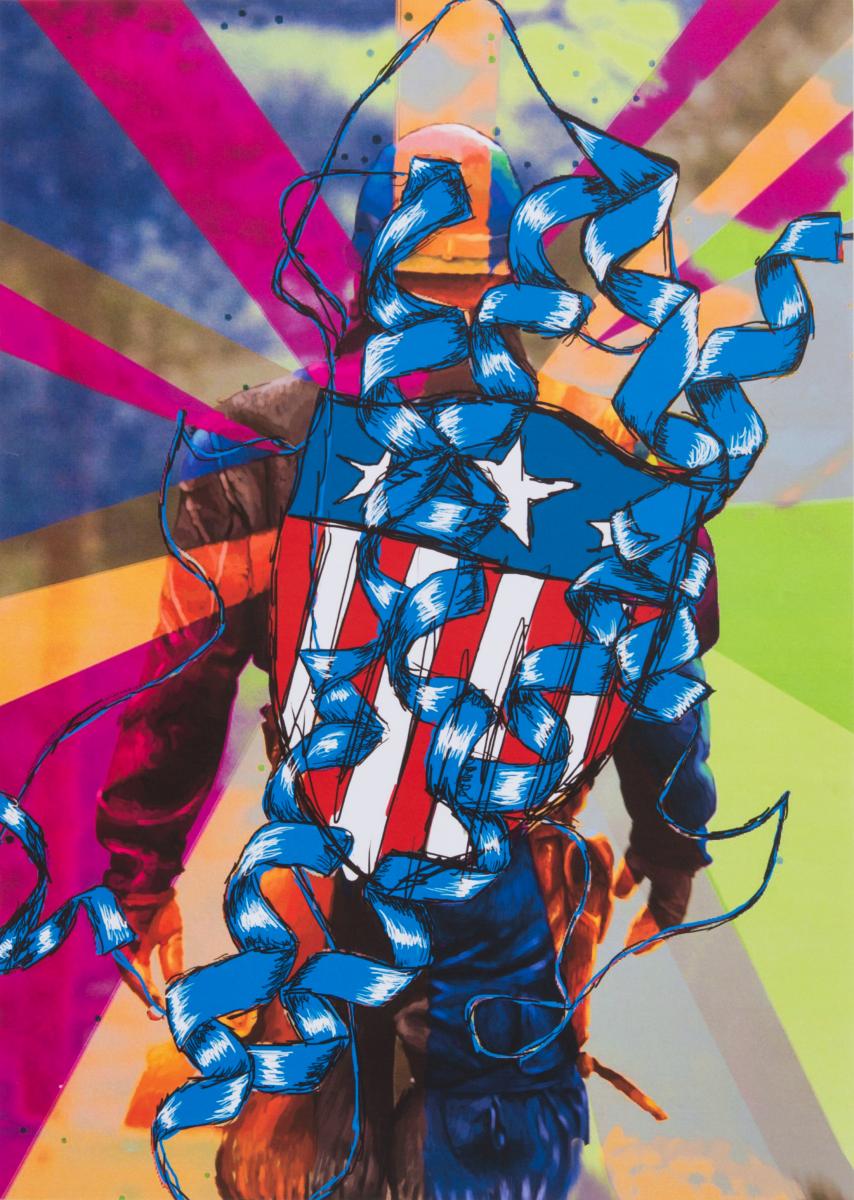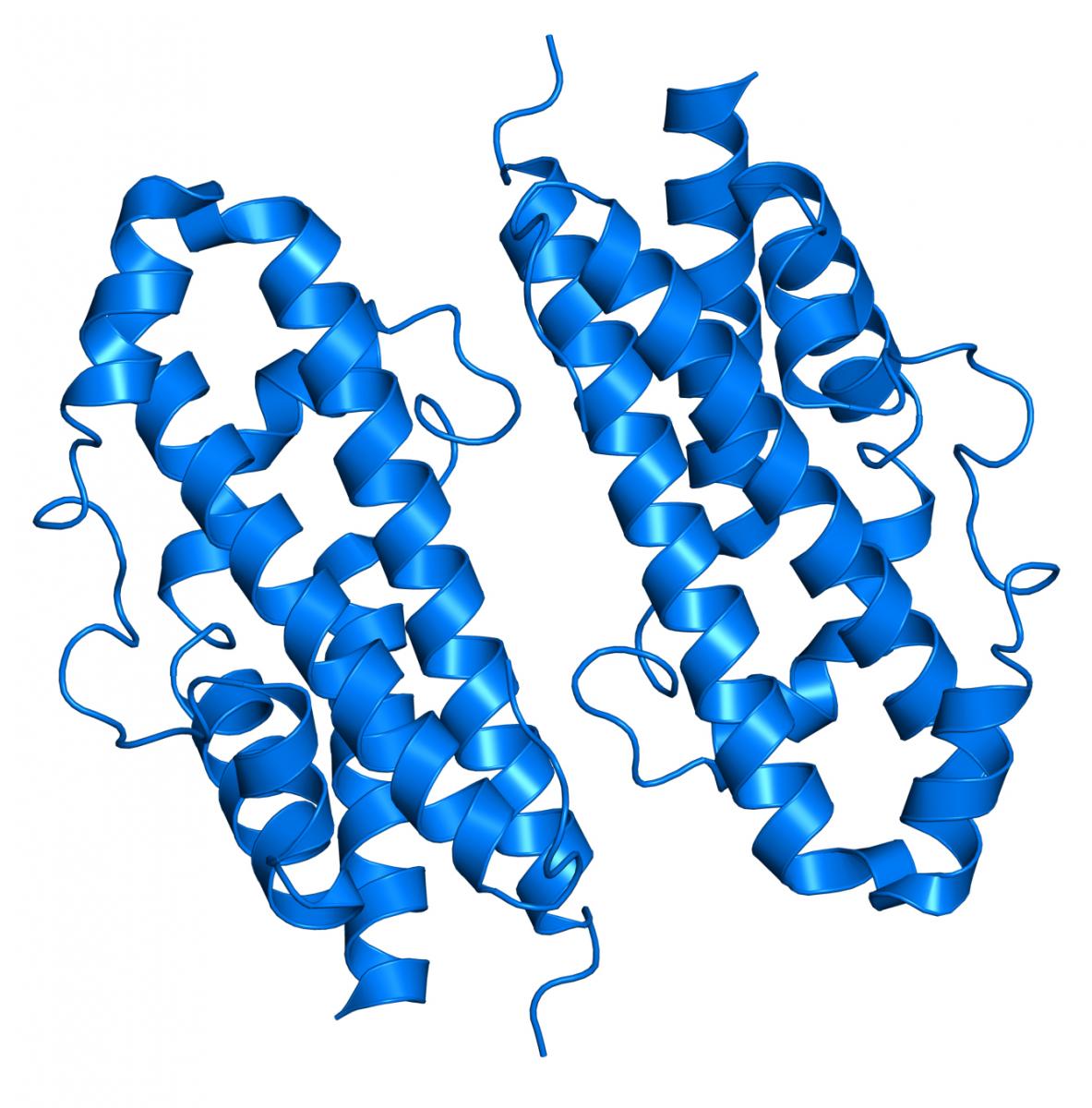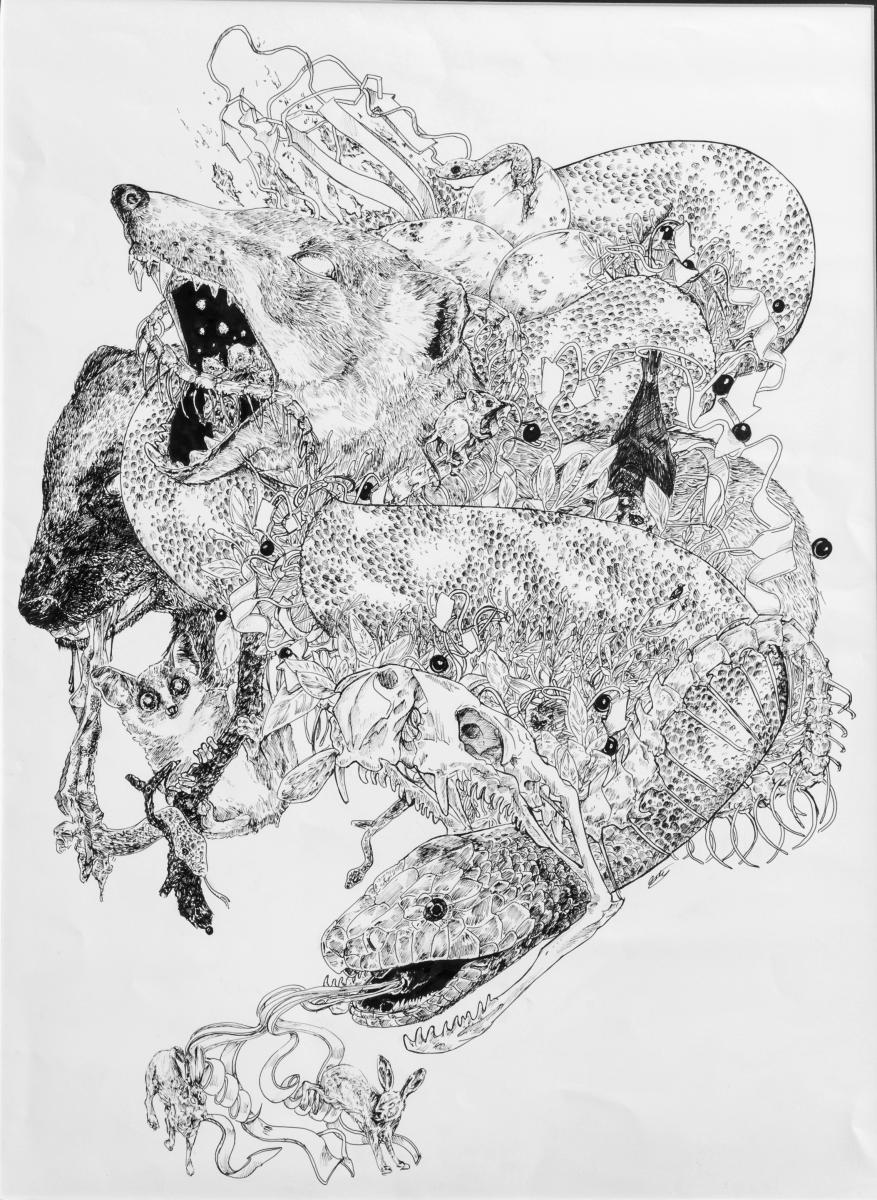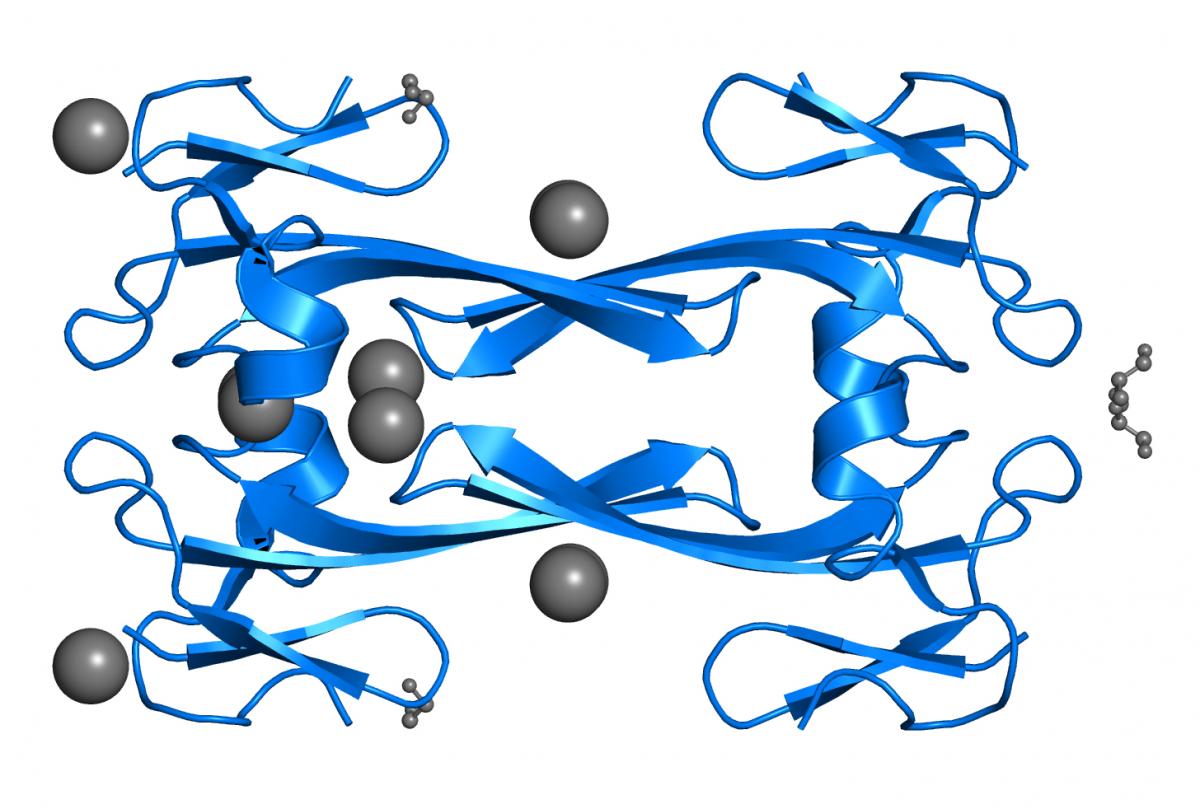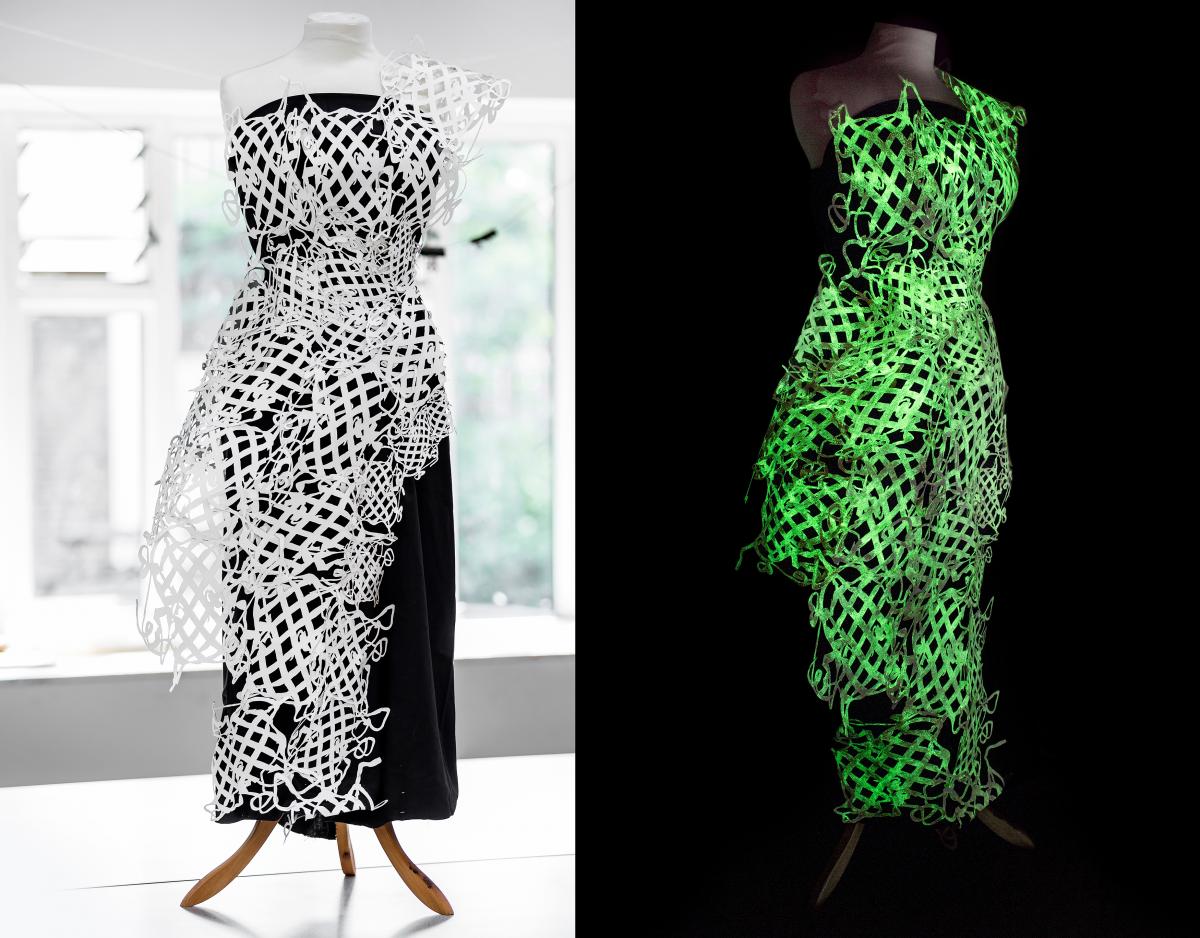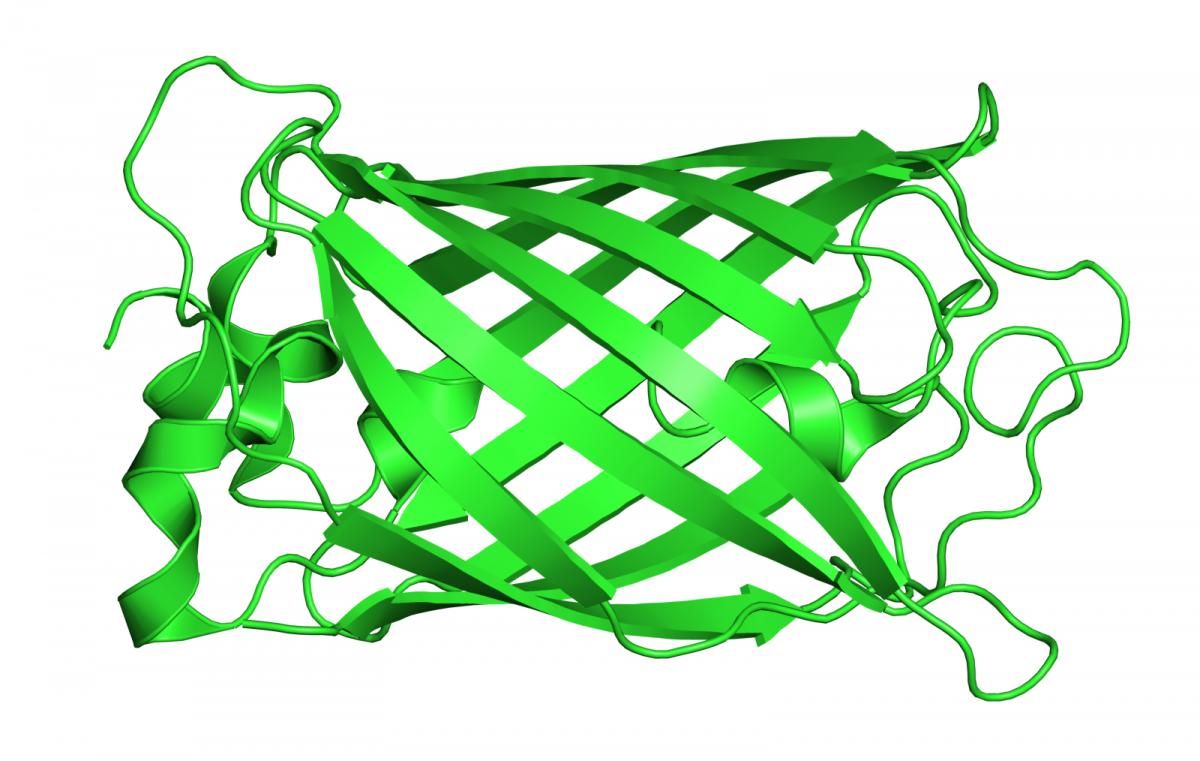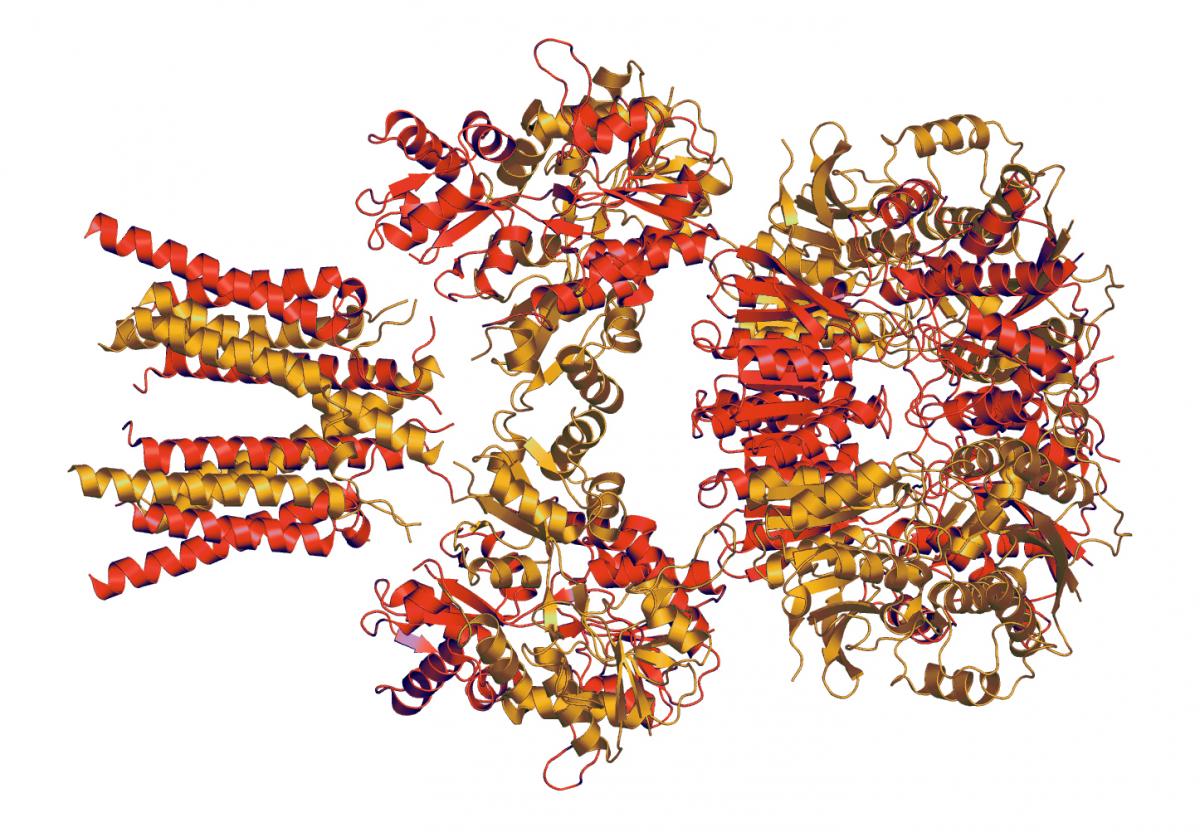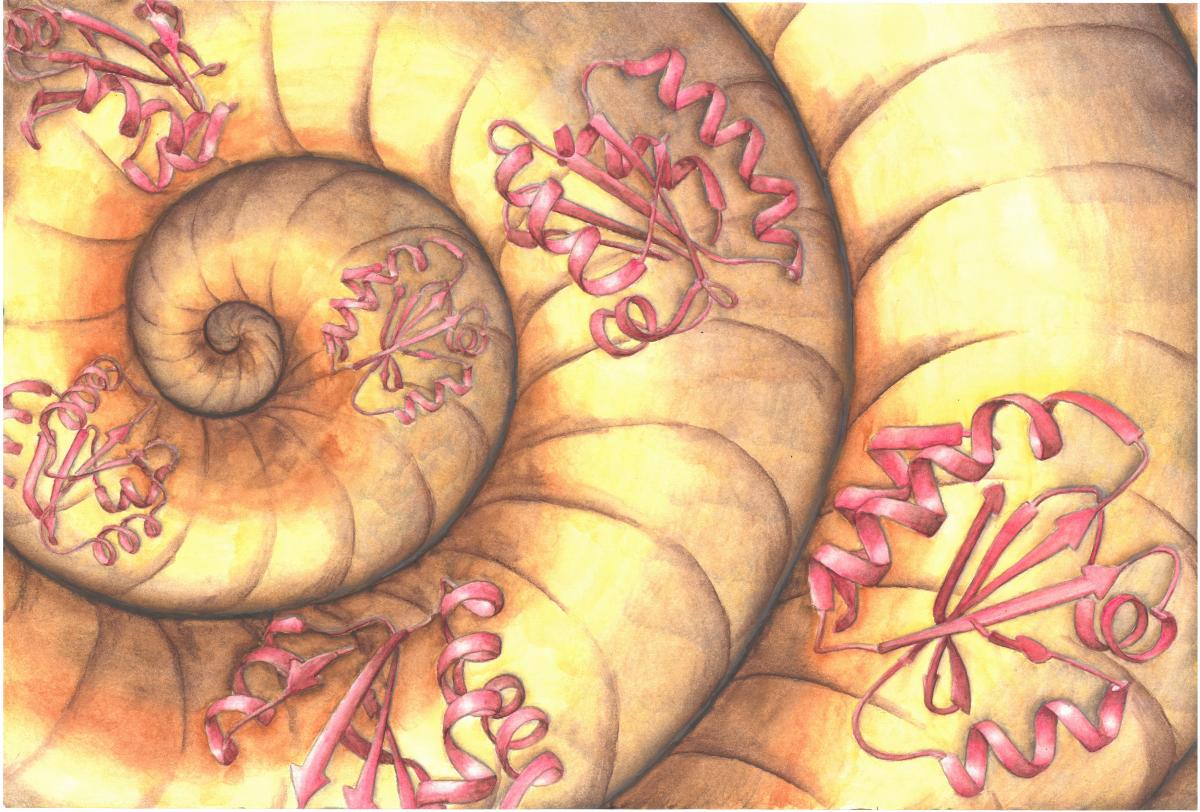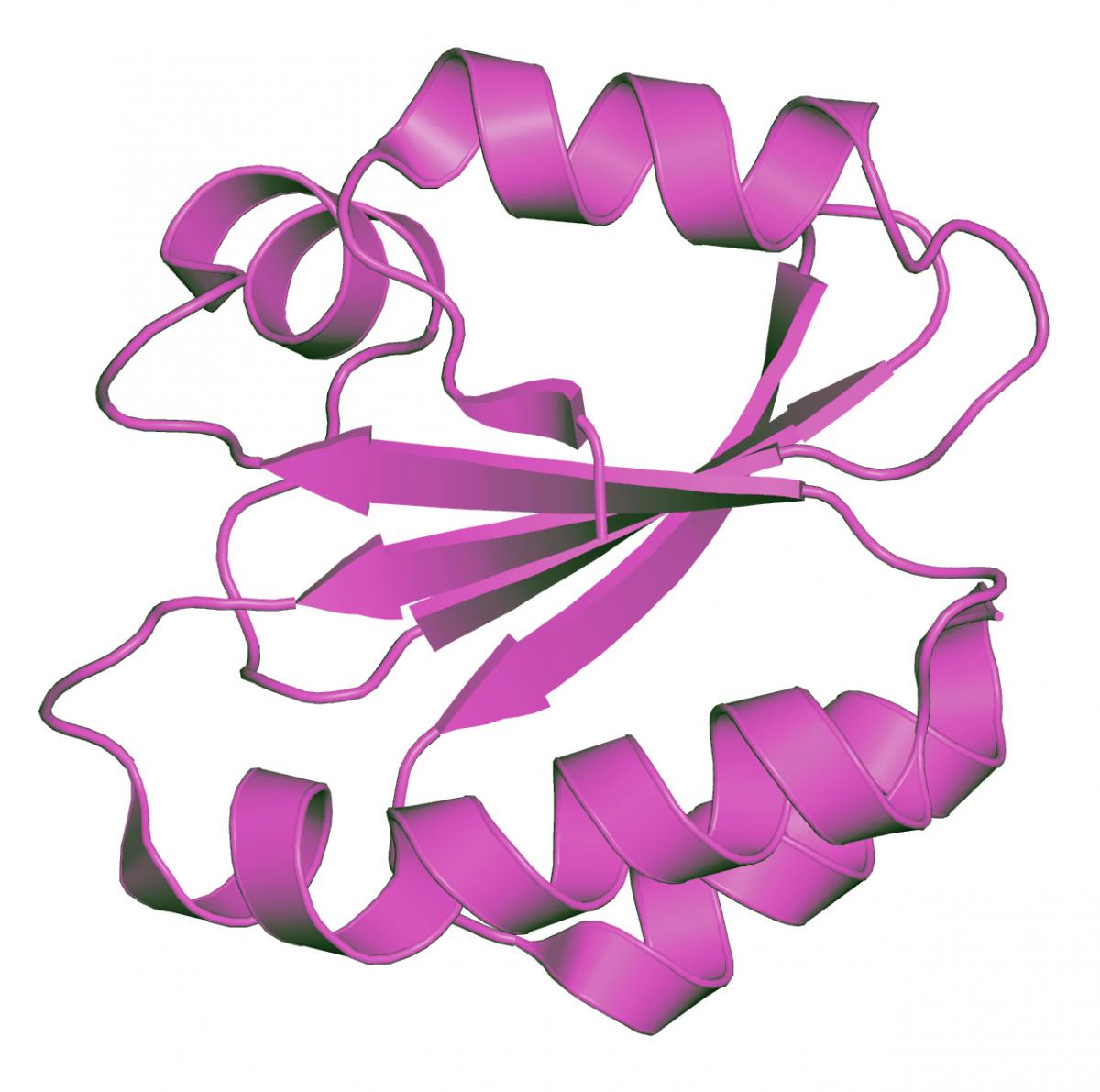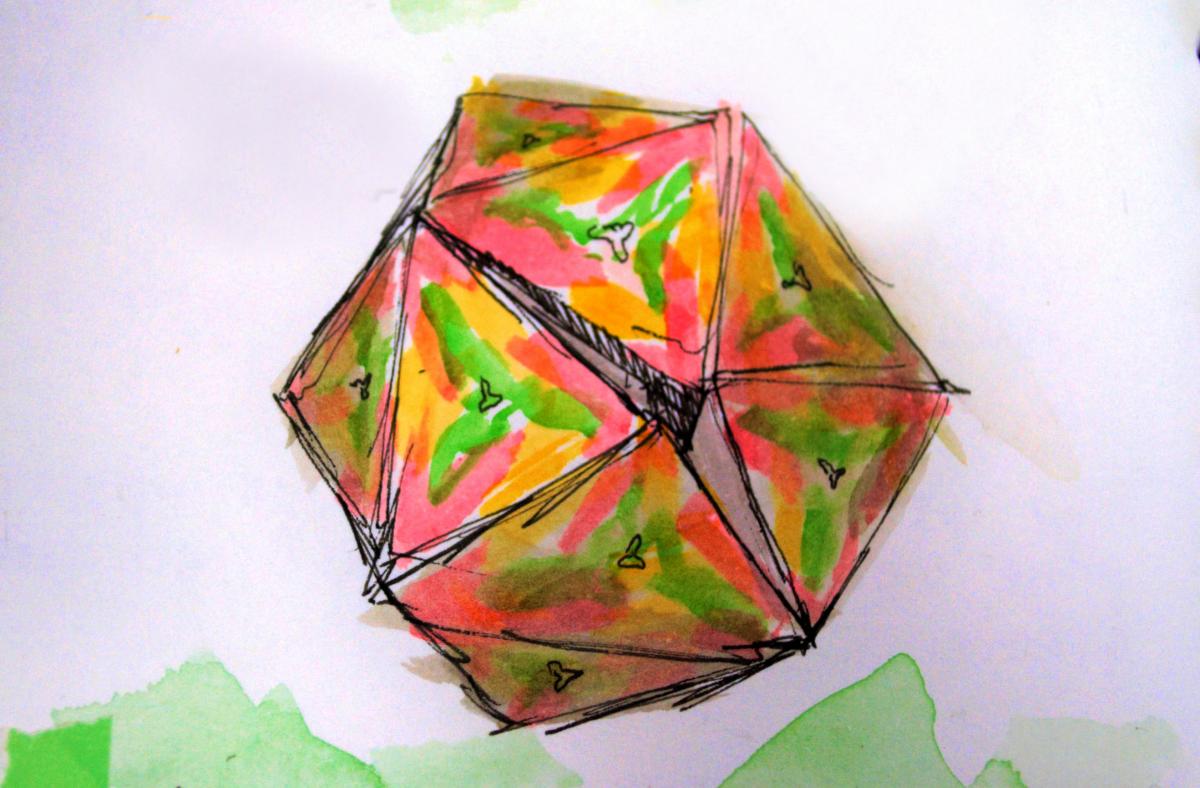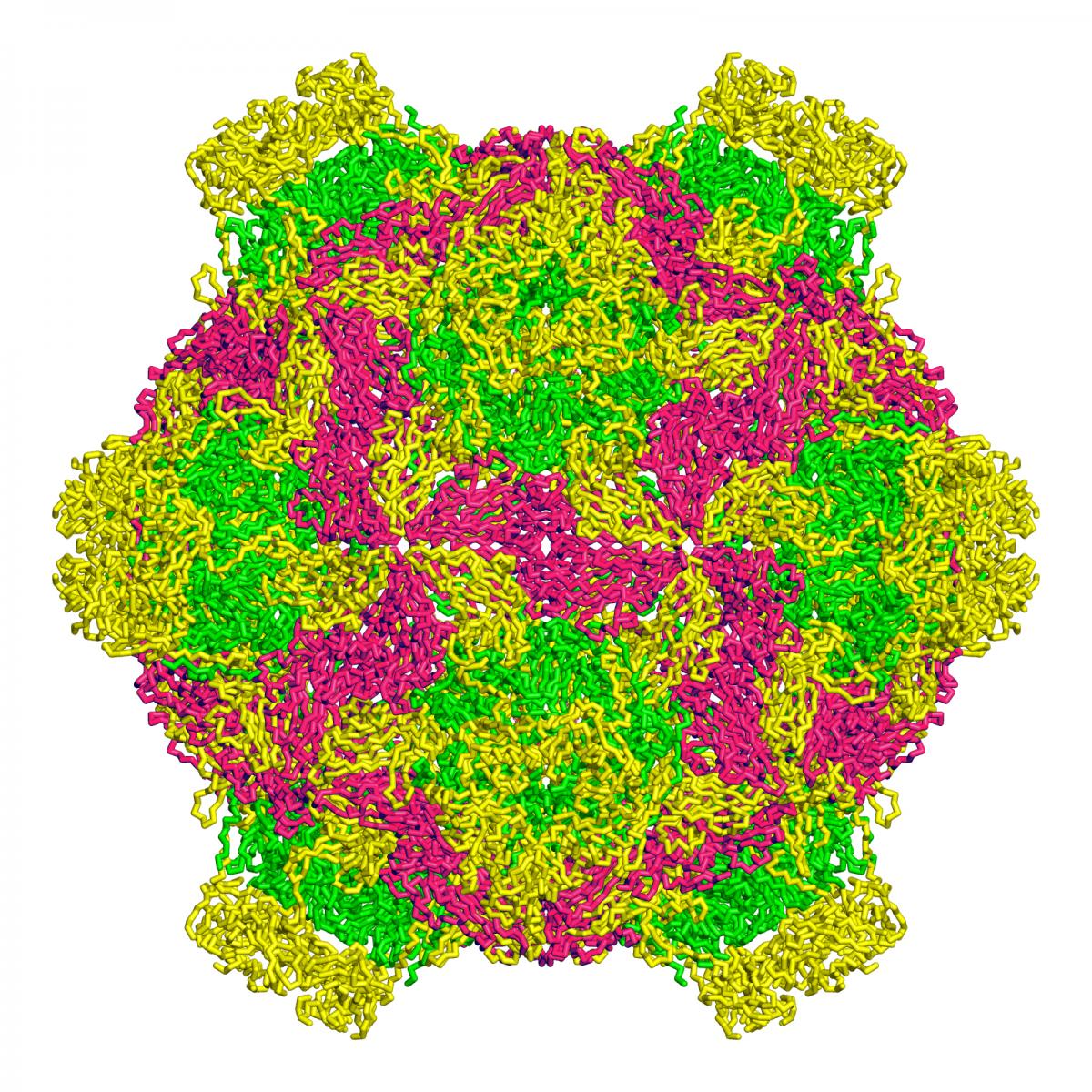Art meets molecular biology Inspire article
Step inside a science-inspired art exhibition where students bring biological molecules to life.
Inspiration can come from the most unexpected places. Often it springs from things we can’t see with the naked eye, like outer space, the depths of the oceans – or even the structure of molecules. This was one of the ideas behind a recent science-inspired art project launched by the Protein Data Bank in Europe (PDBe)w1 at the European Bioinformatics Institute (EMBL-EBI)w2, located near Cambridge, UK.
PDBe is an open repository for molecular structures, so anyone with an internet connection can visit the website and search through thousands of 3D representations of proteins and other biological molecules, from haemoglobin (which carries oxygen around our bodies) and oxytocin (dubbed the ‘love hormone’), to components of deadly viruses and beyond.
Once reserved for the eyes of scientists, such images are now easily accessible to the public. And for the past two years, students aged 12–18 in local Cambridgeshire schools have used the images as the inspiration for creating stunning artworks. Working with scientists, students begin by exploring the huge diversity of biological molecules, understanding their 3D structures and what they do. The students are then encouraged to create their own artistic interpretations, which are presented at an exhibition in central Cambridge.
PDBe aims to grow the art project in the coming years, both to encourage more students to participate, and to attract different audiences to enjoy the artwork. Using active learning processes such as art to teach scientific concepts may also encourage more students to pursue science subjects in the future. With this in mind, PDBe hopes to reach students in younger age groups, from both science and art subjects, to help improve the uptake of scientific subjects at later stages of education.
For now, we are pleased to share some of the highlights from the 2018 PDBe art exhibition, accompanied by a description written by each student explaining the ideas behind their artwork. This selection illustrates the enormous potential for science-inspired creativity, and it is clear that these artworks have the potential to impress people everywhere with the wonders of the molecular world.
Agents of disease
By Katherine Prince
|
|
|
|
Click image to enlarge |
Molecular structure of a T4 bacteriophage baseplate |
This piece of art captures the dark side of a type of virus called a bacteriophage. They get inside bacteria, replicate and can then break open and kill the bacterium. This is what gave them the name of bacteriophage, which means ‘bacteria eater’ in Greek. In some cases, they don’t destroy the bacteria, but can turn them into agents of disease.
Resources
For information on the structure and function of a T4 bacteriophage, and to observe the 3D molecular structures of the capsid and baseplate, visit the PDBe website.
Marvel’s Captain America
By Emi Rush
|
|
|
|
Click image to enlarge |
Molecular structure of somatotropin |
This artwork explores the idea of greatness, both of individuals and of a nation, by referencing the superhero Captain America, who is a symbol of hope and strength. The public perceives him as great because of his strength and physicality. This piece of art questions whether his greatness comes from the man behind the superhero identity or from the serum that gave him his superpowers. The shield represents the person, while the cartoon coils of somatotropin – a growth hormone – represent the serum. The colours (blue, pink and orange) represent the fractured state of masculinity and femininity and ask whether masculinity equates to greatness.
Resources
For information on the structure and function of somatotropin, and to observe the 3D molecular structure, visit the PDBe website.
Toxins
By Ayshini Senadeera
|
|
|
|
Click image to enlarge |
Molecular structure of mambalgin-1, a toxin |
Venomous creatures such as snakes, jellyfish and scorpions generate a sense of fear – but they also intrigue us. Why would such small animals develop such harmful toxins? Why don’t most mammals and birds have access to the biological weapons that venomous creatures use?
The vast number of toxins accessible through PDBe are fascinating. One such toxin is mambalgin-1, which is a pain-relieving peptide isolated from black mamba snake venom. This artwork represents the evolution of biological weapons that venomous creatures call upon.
Resources
For information on the structure and function of mambalgin-1, and to observe the 3D molecular structure, visit the PDBe website.
Dressed to fluoresce
By Rachel Glinsman
|
|
|
|
Click image to enlarge |
Molecular structure of the green fluorescent protein |
Fluorescent proteins emit light in some living organisms, such as deep-sea fish and jellyfish. The molecular pattern of this dress is based on the green fluorescent protein from the jellyfish Aequorea victoria, printed on cartridge paper and coated with glow-in-the-dark paint. The molecules were cut using a laser cutter and assembled into a mesh layer of material around the black body of the dress. The molecules ‘float’ around the dress, mirroring jellyfish movement underwater. In the dark, the dress glows green, much like fluorescent proteins in deep-sea organisms.
Resources
For information on the structure and function of the green fluorescent protein, and to observe the 3D molecular structure, visit the PDBe website.
Connection
By Natalia Heirman
|
|
|
|
Click image to enlarge |
Molecular structure of an AMPA-type glutamate receptor |
Relationships require strong bonds to function; otherwise, they fall apart. The aim of this artwork is to compare the bonds between both proteins and people. For humans, these links allow us to function and be our happiest and healthiest selves. Similarly, many proteins must work in groups to carry out their functions. Proteins must have physical contact between them for larger structures to form, unlike in humans, where a physical interaction is not needed for a relationship to exist.
The protein shown is an AMPA-type glutamate receptor, which mediates neurotransmission and synaptic plasticity in nerve cells, allowing communication between them.
Resources
For information on the structure and function of AMPA-type glutamate receptors, and to observe the 3D molecular structure, visit the PDBe website.
Liver fluke thioredoxin
By Anna Valchanova
|
|
|
|
Click image to enlarge |
Molecular structure of thioredoxin |
Air-breathing freshwater snails of the Lymnaeidae family are the intermediate host for the liver fluke parasite, Fasciola hepatica. When the parasite infects humans or ruminants (such as cattle and sheep), it causes fasciolosis, a disease with painful symptoms including abdominal pain, inflammation of the gall bladder and even fibrosis.
Thioredoxin is an antioxidant found in liver fluke, which aids in the removal of potentially harmful free radicals. In this artwork, the molecular structure of thioredoxin is repeated throughout the spiral of the shell, and its increasing size reflects the parasite’s growth and development inside the snail.
Resources
For information on the structure and function of thioredoxin, and to observe the 3D molecular structure, visit the PDBe website.
Icosahedron assembly
By Rebecca Sheng
|
|
|
|
Click image to enlarge |
Molecular structure of the deformed wing virus |
The structure depicted here is a virus that commonly infects honey bees, causing deformed wings. Like many other viruses, the deformed wing virus is made up of repeating symmetrical units that self-assemble into a 3D object. The shapes that viruses form are often similar to the Platonic solids. The ancient Greek philosopher Plato wrote about these shapes in his work Timaeus, in which he linked four of them to the classical elements: earth, air, water and fire. The deformed wing virus has the symmetry of one of these solids: the regular icosahedron, which has 20 faces, 30 edges and 12 vertices.
Resources
For information on the structure and function of the deformed wing virus, and to observe the 3D molecular structure, visit the PDBe website.
Acknowledgement
The 2018 PDBe art project was a collaboration with four Cambridgeshire schools: the Leys School, the Perse School, Impington Village College and the Stephen Perse Foundation Sixth Form College.
Web References
- w1 – The Protein Data Bank in Europe (PDBe) is a database for 3D structural data relating to large biological molecules, such as proteins and nucleic acids. The models are made freely available worldwide.
- w2 – The European Bioinformatics Institute (EMBL-EBI) hosts and shares data from life science experiments performed all over the world, and its scientists carry out basic research in computational biology.
Resources
- Find out more about the PDBe art project from the PDBe website and from EMBLetc.
- View more molecular inspired artworks by visiting the ‘Featured structures’ page on the PDBe website.
- Printable teaching materials, including a protein colouring book, are available on the PDBe website.






